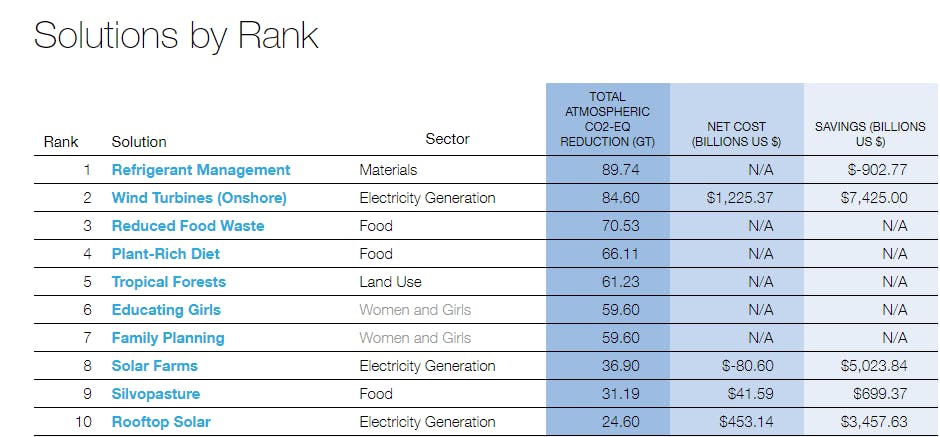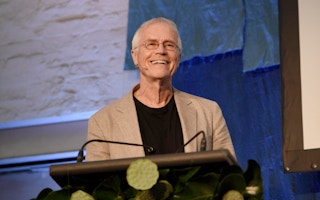To generate effective, universal action that will solve the problem of climate change, the global community needs to abandon the “wussy” language of climate mitigation and rethink the “negative” sports and war metaphors that are pervasive in discussions about the issue.
This was the advice offered by American environmentalist, author and activist Paul Hawken at the recent Purpose conference in Sydney.
Speaking to a 500-strong audience at Commune in Sydney, Hawken said that the term “climate mitigation”, which is commonly found in government policies, international negotiations in the annual United Nations Framework Convention on Climate Change (UNFCCC) conference, and scientific reports isn’t strong enough.
“When you are heading down the wrong road towards a cliff, the only thing that makes sense is not to slow down and go over the cliff slowly, but to stop and turn around,” said Hawken.
This is why, instead of the prevailing narrative of mitigating climate change, Hawken champions the notion of reversing global warming. Last year, Hawken co-founded the Drawdown Project, which maps, measures, models, and describes the 100 most effective, economically viable and scaleable solutions to reverse global warming.
The project has entailed a global research programme to identify and rank climate solutions, with academics from institutions around the world participating in the project; its findings were published in a book titled ‘Drawdown—The Most Comprehensive Plan Ever Proposed to Reverse Global Warming‘.
Drawdown is the only global initiative to focus on reversing global warming rather than mitigating it, said Hawken.

The Drawdown Project’s list of 10 most promising solutions to reverse global warming. Image: Drawdown Project
The project has identified refrigerant management—that is, phasing out hydrofluorocarbons, synthetic coolant chemicals which are extremely potent greenhouse gases—as the single most effective strategy to slash emissions. The initiative will cost some US$903 billion by 2050, but save almost 90 gigatonnes of emissions.
For Australia, regenerative agriculture is the most important solution that the country can take, said Hawken. This is a farming method that doesn’t till the soil, use pesticides or synthetic fertilisers, while practising multiple crop rotations and using cover crops to prevent the soil from being exposed to the environment.
“The land (in Australia) is so fragile, and commercial agriculture has deteriorated its condition,” he noted.
“
When you are heading down the wrong road towards a cliff, the only thing that makes sense is not to slow down and go over the cliff slowly, but to stop and turn around.
But globally, “the number one solution to reversing global warming is the empowerment of girls and women,” said Hawken, indicating that two of the top 10 gender-specific solutions identified by the Drawdown Project—educating girls and family planning—could together reduce about 120 gigatonnes of carbon emissions while costing very little.
When a girl gets to stay in school until high school age, she has an average of two children, whereas girls who are pulled out of education when they hit puberty tend to have about five children each, Hawken said. So educating girls not only ensures better economic outcomes and resilience for women, it also slows down population growth.
“It’s a form of family planning, but a woman has chosen that by being supported instead of being told what to do,” Hawken explained.
Giving women access to voluntary, high quality family planning can also improve their well-being and health, while addressing the population issue in a way that steers clear of problematic approaches such as governments forcing the birth rate down through policies or people in rich countries telling people in poor countries to stop having children, he added.
In addition to specific solutions and strategies, the global community needs to change the language that is common in climate change narratives, Hawken said.
“Talk of carbon war rooms, and fighting or combating climate change is so negative,” said Hawken. Worse, it positions the problem “as something out there that we have to fight and win, when in reality, we are the problem and not the climate,” he added.
The process of othering the natural world from humans is what has caused today’s environmental problems, said Hawken. “We cannot solve the problem the same way; we have to think differently.”
One way to do this may be to not talk about the climate at all, he told Eco-Business in an interview. Rather than the relatively intangible idea of addressing climate change, people are more concerned with things that affect them on a daily basis, he said. In this vein, the next project he is working on is a book titled ‘Regeneration: How to create 1 billion jobs’.
Research has shown that emerging sectors that could help address climate change will also create millions of jobs in the future. For instance, the Business and Sustainable Development Commission estimates that sustainable business models in sectors like agriculture, energy, cities, and health could create 230 million jobs in Asia alone.
“The way you motivate people is to give them meaningful, purposeful, living wage jobs that give them respect for themselves and their community,” he said. “What people want is security and jobs that are meaningful, and the outcome in terms of reversing global warming is secondary,” he said.

















